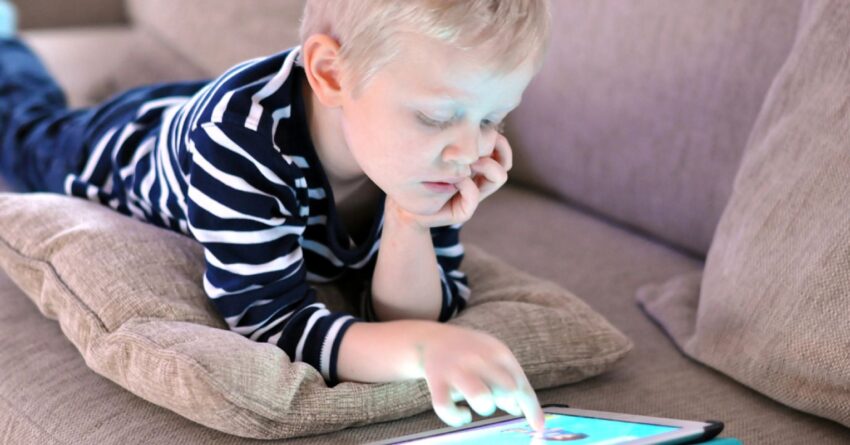We just can’t seem to get it right. On the one hand, we paint a picture of our children as more vulnerable than ever before. At the slightest provocation, we label discomfort as anxiety and talk about trauma as if it were something everyone experiences every day. (The term should be reserved for more serious episodes of exposure to difficult events.) And, yet, when it comes to smartphones and screen time, we seem to be unwilling to protect children from a preventable danger despite the growing science that is providing evidence for just how dangerous screen time can be to young people’s mental and physical health.
“Technoference”
Surgeon General Dr. Vivek H. Murthy recently wrote in a New York Times Op-ed that social media should come with a clear warning that it can be harmful to teens. But we need to look further than just social media and teens. There is even a new term for all this time using technology and its impact on people’s lives: technoference. Awkward as that word is, it is a reminder that our technology is interrupting the lives of both children and adults in unintended ways. It diminishes the quality of parent-child interactions. It interrupts much-needed sleep for people young and old. It is associated with more anxiety and behavioral problems, especially for young children.
Breaking Our Dependency
Breaking our dependency on checking our social media feed or scrolling through TikTok videos is not going to be easy, in part because it is a vicious cycle. Take, for example, research by Caroline Fitzpatrick at the University of Sherbrooke who assessed digital use by children from ages 3.5 to 5.5 years of age. In an odd twist of the data, Fitzpatrick found that as young children used tablets more often, they showed a lower ability to deal with frustration and self-regulate their emotions. In other words, if one expects to be amused by a screen, then one never has to learn to sit quietly or wait.
Oddly, as children get older, it was reported that those with the most screen time had parents who tried to decrease their child’s time on screen, only to see the child resist with force. The result is that children who are being most harmed by screens actually report increased amounts of time on screens by age 5.5 as parents felt compelled to give in and let the child be even more online to deal with the child’s ever-increasing problem behaviors. In this strange escalation, once the child is hooked on screens, it is nearly impossible to go backward.
All of this becomes a serious problem for schools that are now debating how best to limit students’ access to their smartphones and random online surfing while in class. And, yet, how do you also harness the power of the internet in the classroom, including keeping young people’s sense of connection with their peer group?
My own research is highlighting this tension between the costs and benefits of being constantly online. Participants in a study of Ukrainian newcomers to Canada who have been forcibly displaced by the war are part of a study that includes an analysis of their time spent online. While the data are still being analyzed, I’ve been amazed to see just how much time adolescents spend scrolling through messages on their smartphones, playing games online, and participating in social media or watching videos. When they walk, they text. When they eat, they watch their phones (their parents do the same). When they are in school, they are distracted, anticipating the next message from friends in other countries.
Perhaps the Surgeon General is right and the time has come for a reckoning with social media and screens in general. We know children are experiencing unprecedented levels of anxiety, depression, and loneliness. Could the solution be, in part, as simple as taking away their tech, even if it is just while they’re in school and at the dinner table? Is it time we completely remove screens from the hands of children under 5? (The evidence is clear that there are only negative consequences.) If this is going to work, though, we may have to start with us adults who need to model better behavior. The kids are watching.
